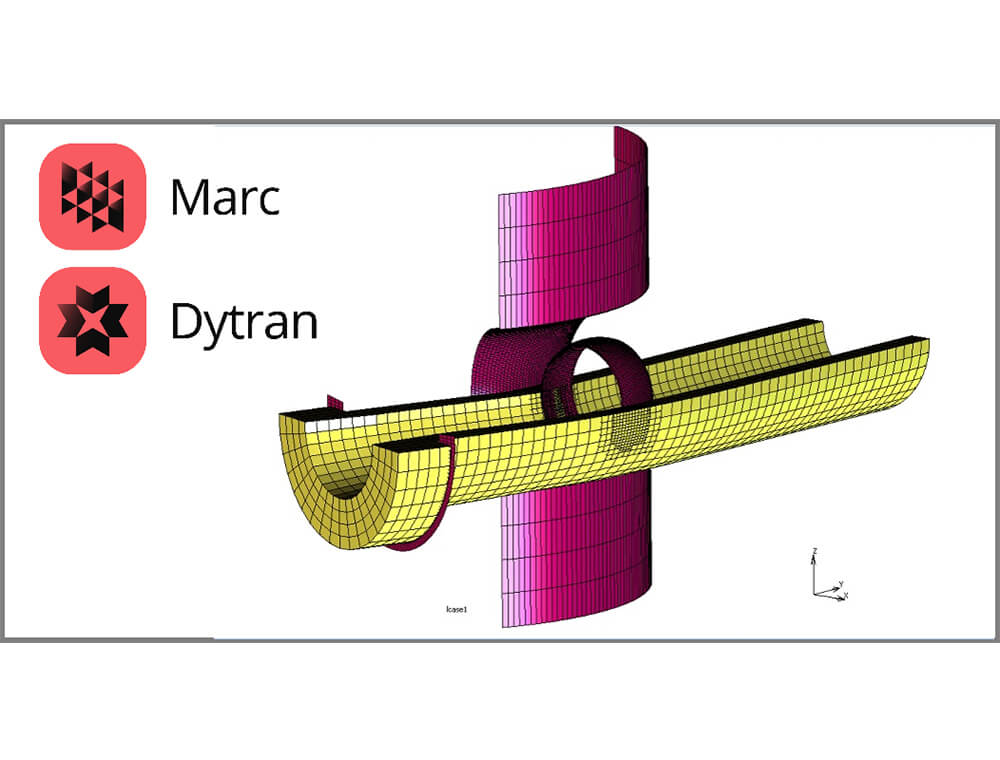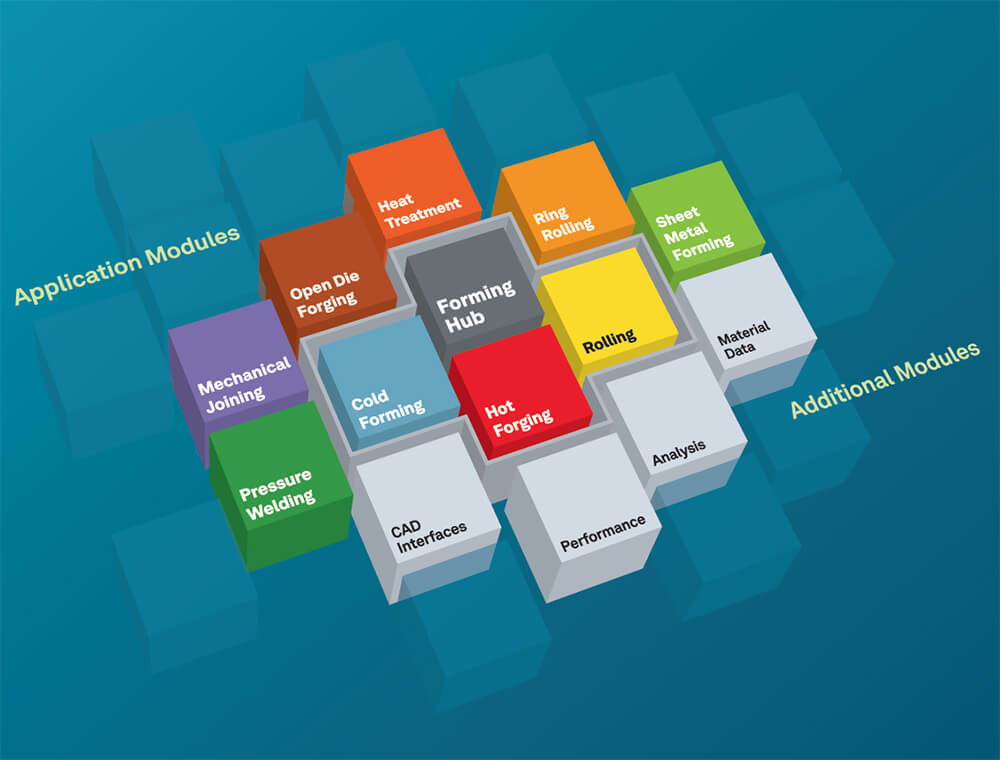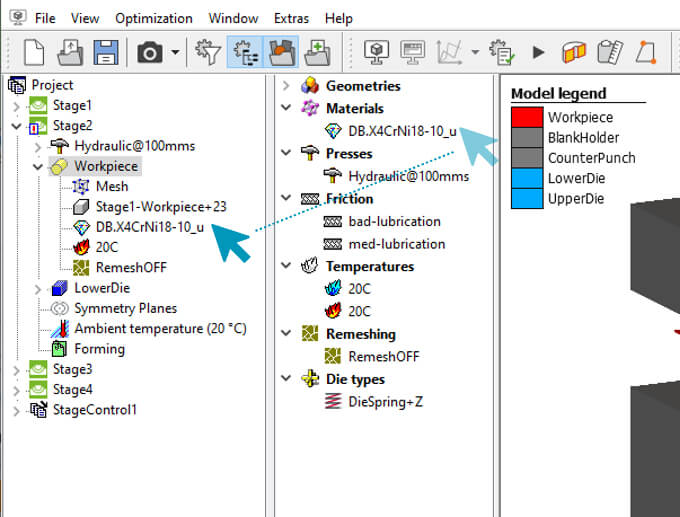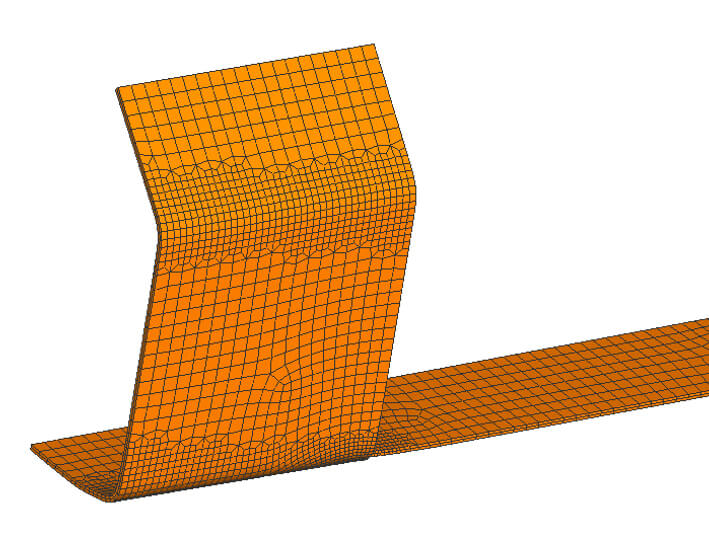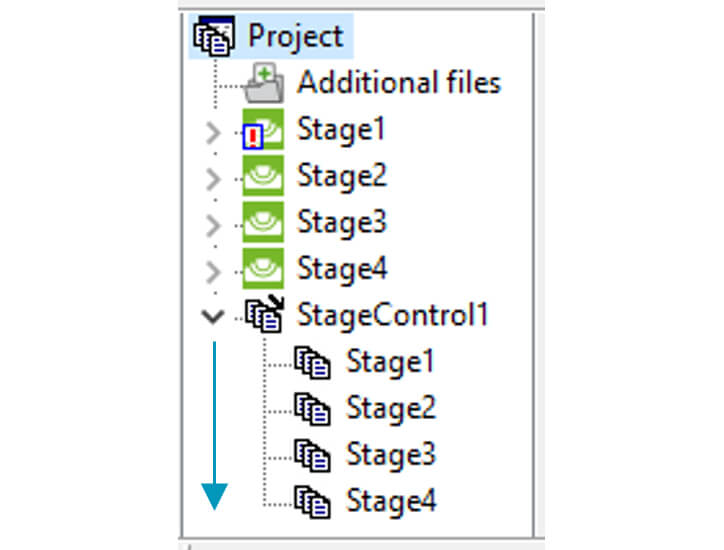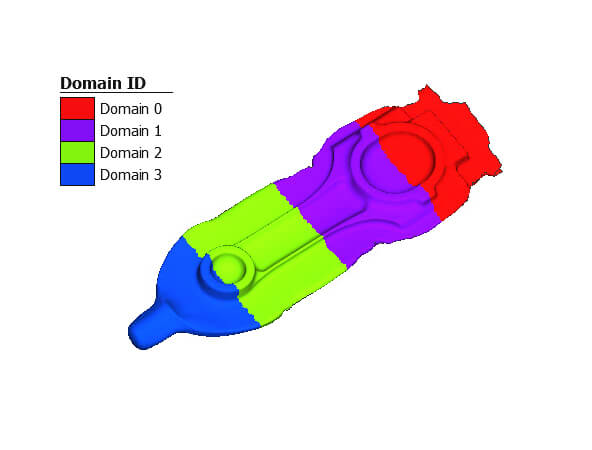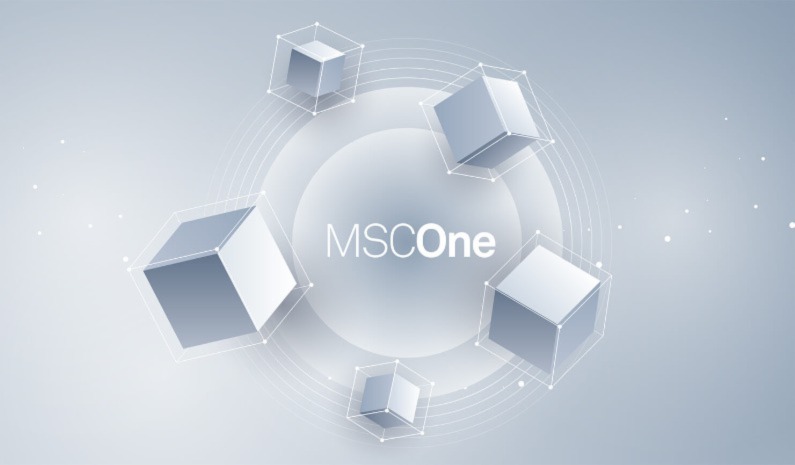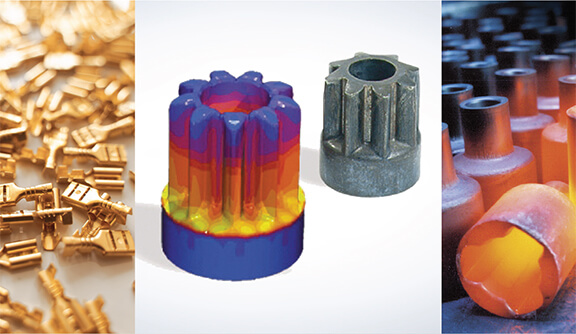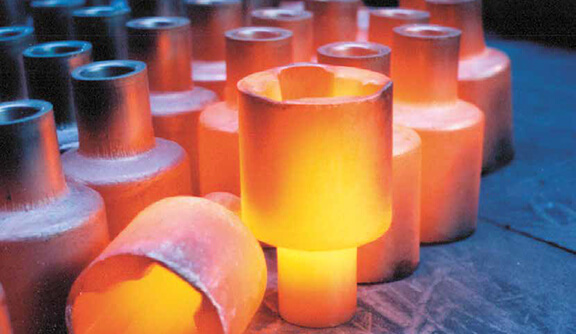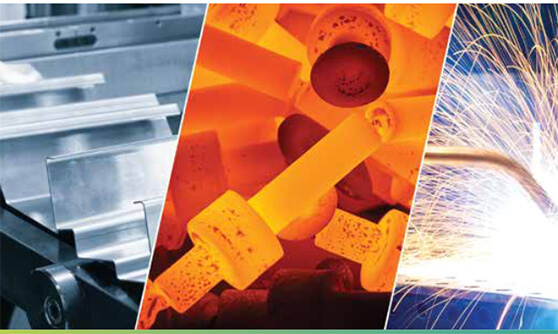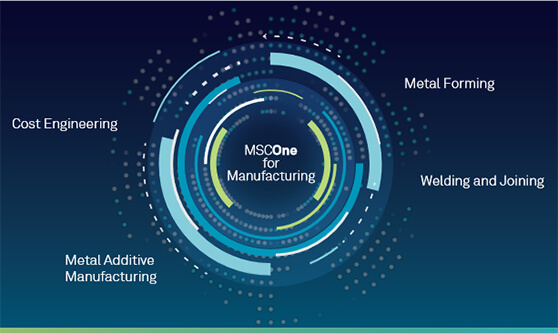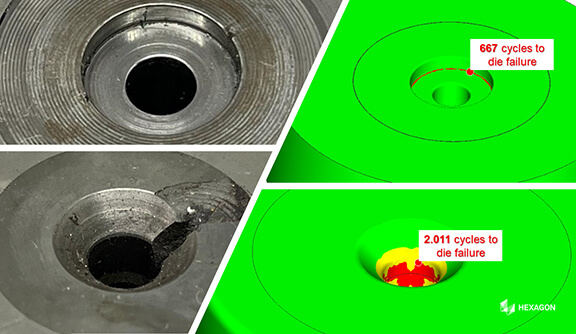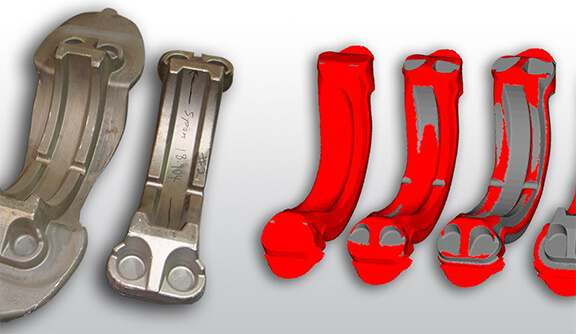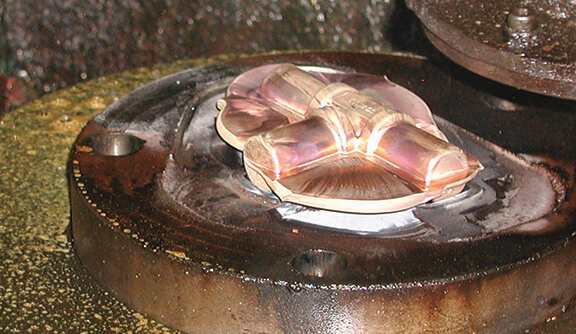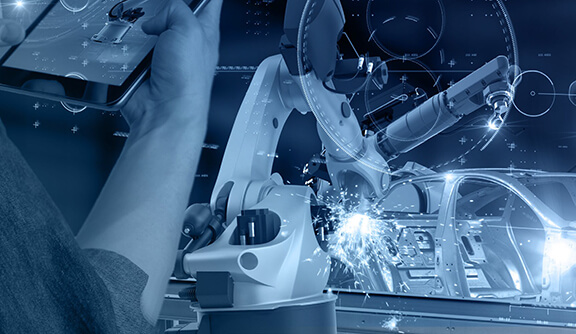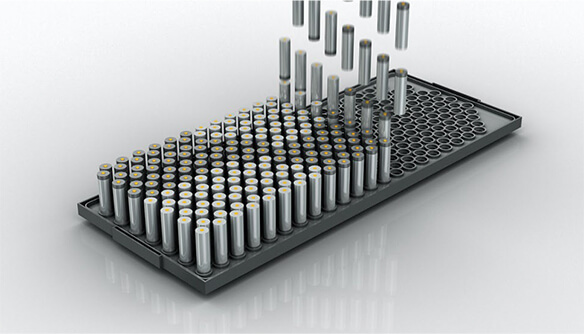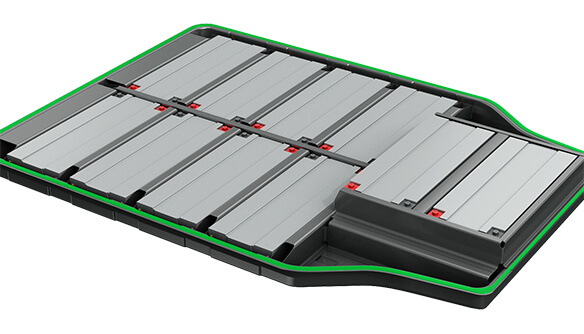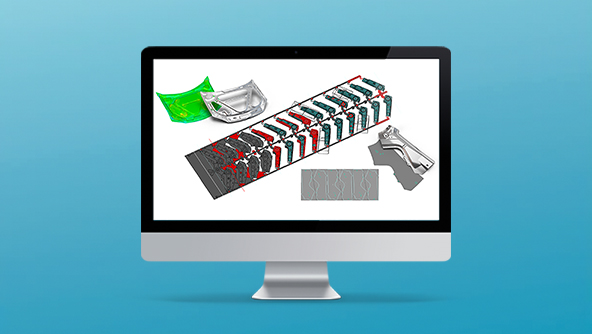Simufact Forming
Specialised forming simulation software for virtual testing and process design for component optimisation
Metal Forming Excellence
Advanced simulation software orchestrates metal forming, unlocking the art of successful cold forming, hot forging, rolling, and stamping.
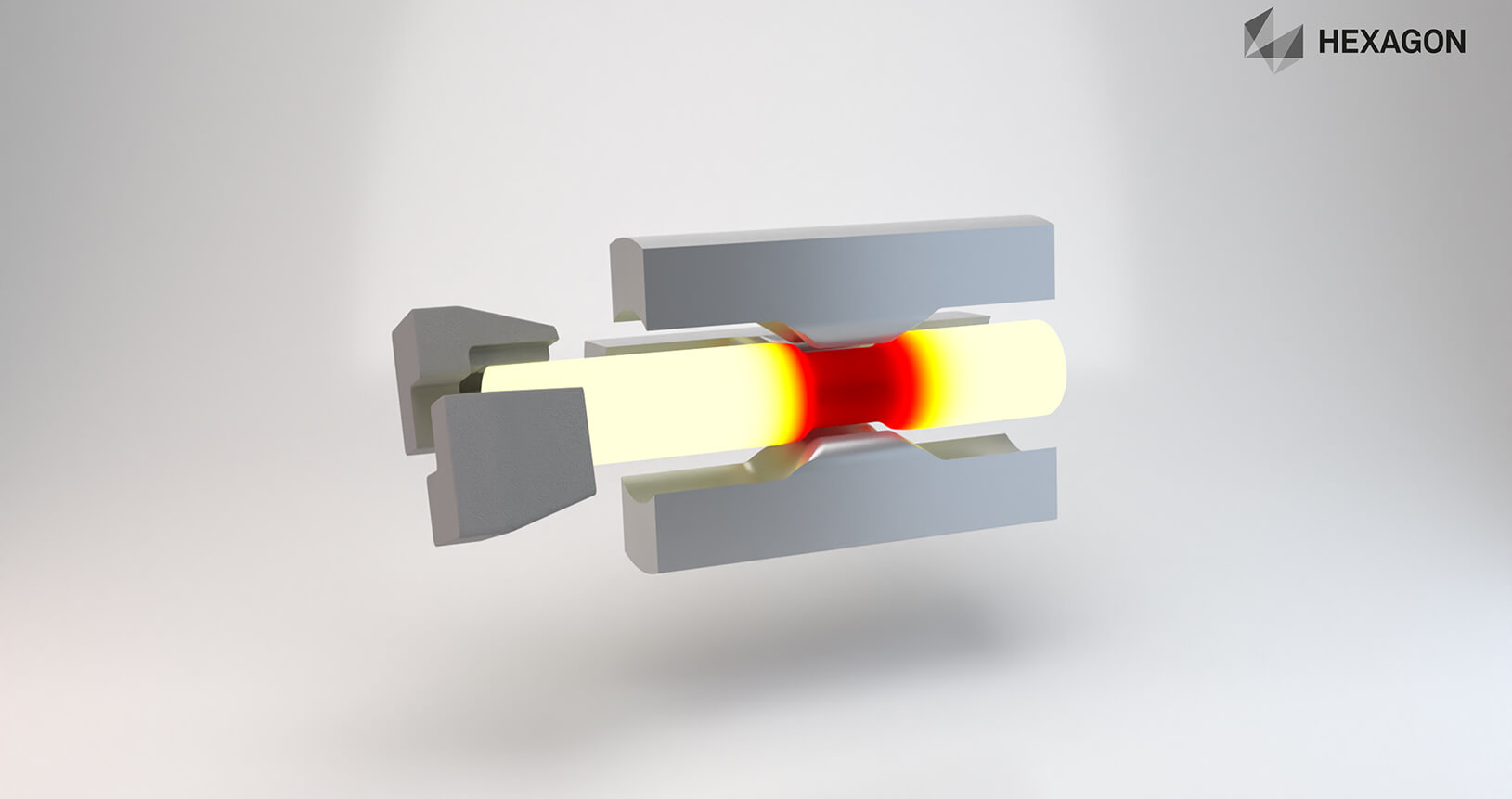
![]() Simufact Forming copre l’intera gamma di tecnologie di formatura e garantisce una raffigurazione realistica dei processi con funzionalità 3D complete e rappresentazione 3D di tutti gli utensili e i pezzi. È possibile ottenere simulazioni accurate acquisendo informazioni sugli aspetti chiave che influenzano i processi, fra cui:
Simufact Forming copre l’intera gamma di tecnologie di formatura e garantisce una raffigurazione realistica dei processi con funzionalità 3D complete e rappresentazione 3D di tutti gli utensili e i pezzi. È possibile ottenere simulazioni accurate acquisendo informazioni sugli aspetti chiave che influenzano i processi, fra cui:
- cinematica della macchina,
- comportamento non-lineare del materiale di cui è composto il pezzo, inclusi plasticità, dipendenza dalla velocità di deformazione ed effetti della temperatura;,
- attrito e contatto fra utensili e pezzi di formatura,
- fenomeni di self-contact fra i pezzi di formatura per una stima delle pieghe
- termodinamica del processo: condizioni iniziali di riscaldamento, aumento della temperatura a causa di attrito ed energia legati al processo di formatura e scambio termico fra utensili, pezzo e ambiente.
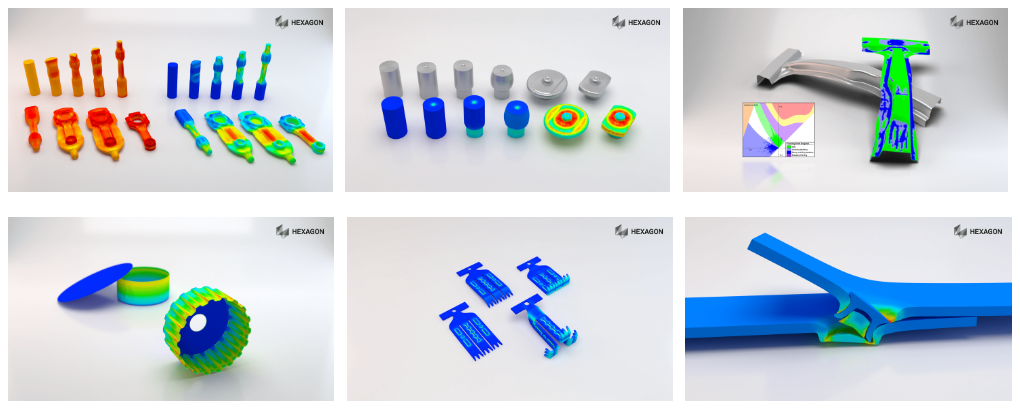
Sono disponibili diversi moduli in base al processo che si desidera approfondire. Il modulo principale di Forming Hub include le principali funzionalità necessarie per il funzionamento e la gestione del software di simulazione (interfaccia grafica, solutore, database dei materiali, ecc.), oltre alla capacità di eseguire simulazioni di formatura a freddo e forgiatura a caldo. Gli utenti possono scegliere fra le altre opzioni seguenti per espandere le capacità di simulazione.
- Formatura di lamiere
- Laminazione
- Laminazione ad anello
- Forgiatura a stampo aperto
- Trattamento termico
- Giunzione meccanica
Sono inoltre disponibili moduli aggiuntivi per l’analisi delle sollecitazioni legate al processo di stampaggio, calcoli microstrutturali, prestazioni più veloci, importazione CAD, personalizzazione e accesso ai database dei materiali.
Exactly the right forming process you need
Forming processes conducted significantly below the recrystallisation temperature of the material. These processes include typical upsetting and extrusion processes (e. g. for the production of bolts, nuts and rivets), but can also include coining, cold hobbing, thread rolling and last but not least drawing processes (e. g. wire drawing, tube drawing and profile drawing).
Forming processes conducted above the recrystallisation temperature of the material. A typical process is hot forging, including closed die hot forging, auxiliary processes such as heating and cooling, cutting processes and preform operations (e. g. upsetting, bending, forge rolling and cross wedge rolling) as well as extrusion processes.
Different methods of sheet metal forming can be used depending on the geometry of the desired part. Based on the characteristics of each deformation process, the forming engineer can choose between: Deep drawing, ironing, punching, bending, stamping, and a variety of other manufacturing processes. Due to the geometric complexity of the parts being manufactured, additional multistage forming that combines different processes is frequently required within a phase of production. Therefore, production is usually achieved by automated transfer or stage pressing, or by progressive tools.
Forming processes in which the shape of the workpiece is changed incrementally (i. e. step-by-step) by repeated, local forming using geometrically simple dies which move relative to the workpiece. Open-die forging includes among others cogging, radial forging, rotary swaging, shell forging and rotational partial forging.
Rolling
Forming processes in which the material is formed between two or more rotating dies (rollers). Examples of rolling processes include; flat and profile rolling, spinning, flow forming and reduction rolling.
Ring-Rolling
Special rolling method for the manufacturing of seamless rings with related sub-methods such as; radial ring rolling, radial-axial ring rolling and axial closed die rolling.
Methods in which, metallic workpieces (mainly steel pieces) are temporarily heated for the targeted improvement of the material’s properties.
Quench Temper
Quench temper enables the simulation of complex heat treatment processes with all necessary stages. In each of them the respective temperatures and heat transfer coefficients of resp. to dies and (furnace) environment can be specified in many ways as constant or changing.
Case Hardening
Case hardening enables the simulation of direct hardening processes with all necessary stages. In each of them the respective temperatures and heat transfer coefficients of resp. to dies and (furnace) environment can be specified in many ways as constant or changing.
Induction Heating
This process type allows the modelling of an inductive heating process and therefore a more precise estimation of the resulting temperature distibution.
Mechanical Joining
Forming processes that cause a mechanical interlock between the pieces. Mechanical joining includes riveting methods such as; punch riveting, self-piercing riveting and blind riveting, as well as clinching technologies such pressure joining, clinching and toxing.
Resistance Spot Welding
A pressure welding process during which the sheets are pressed together locally with the help of fitted copper electrode welding guns. The electrical current between the weld guns causes a heating and melting of the joining partners, creating a small circular welded area between them.
Pressure Welding
Methods in which, metallic workpieces (mainly steel pieces) are temporarily Pressure welding stands for a group of joining processes in which components are joined by heating and compression. Heat can be generated either via current (resistance welding) or by using friction (friction welding) for the targeted improvement of the material’s properties.
Pre-defined Setups for specific Application Modules
Easy Process Setup via Drag and Drop or by Automation through Python Scripting
Geometries, materials, kinematics and attributes can be easily and intuitively assigned to one or more processes via drag and drop.
Similarly, automated processes can be carried out via Python skritping. This feature benefits all users by streamlining automation, saving time and preventing errors with comprehensive documentation and prebuilt scripts.
Automatic Meshing & Remeshing
Automated Sub-Stage Simulation
Parallelisation Technologies
Pre-defined Setups for specific Application Modules
Easy Process Setup via Drag and Drop or by Automation through Python Scripting
Geometries, materials, kinematics and attributes can be easily and intuitively assigned to one or more processes via drag and drop.
Similarly, automated processes can be carried out via Python skritping. This feature benefits all users by streamlining automation, saving time and preventing errors with comprehensive documentation and prebuilt scripts.
Automatic Meshing & Remeshing
Automated Sub-Stage Simulation
Parallelisation Technologies
Pre-defined Setups for specific Application Modules
Easy Process Setup via Drag and Drop or by Automation through Python Scripting
Geometries, materials, kinematics and attributes can be easily and intuitively assigned to one or more processes via drag and drop.
Similarly, automated processes can be carried out via Python skritping. This feature benefits all users by streamlining automation, saving time and preventing errors with comprehensive documentation and prebuilt scripts.
Automatic Meshing & Remeshing
Automated Sub-Stage Simulation
Parallelisation Technologies
Pre-defined Setups for specific Application Modules
Easy Process Setup via Drag and Drop or by Automation through Python Scripting
Geometries, materials, kinematics and attributes can be easily and intuitively assigned to one or more processes via drag and drop.
Similarly, automated processes can be carried out via Python skritping. This feature benefits all users by streamlining automation, saving time and preventing errors with comprehensive documentation and prebuilt scripts.
Automatic Meshing & Remeshing
Automated Sub-Stage Simulation
Parallelisation Technologies
Your benefits with Simufact Forming
Design and optimise your forming process:
- Determine the optimal number and sequence of stages and process window with minimal material usage while ensuring a robust manufacturing process.
- Identify and eliminate potential manufacturing defects.
- Optimise tool life.
Simplicity – No expert knowledge required as the software solution is designed to be user-friendly, intuitive and process-oriented.
Sustainability – Save material, time and money by replacing expensive and time-consuming physical tests with virtual tests.
Research Projects
DP Forge Project: Integrative Design of Micro-alloyed DP Forging Steel
DP Forge Project aims to optimize energy-efficient processes for manufacturing forged components using a new DP steel developed through ICME. The project includes creating a validated multi-scale simulation platform for industrial use, standardizing heterogeneous software tools, and collaborating with IEHK (RWTH Aachen), IIT Madras, and Tata Consultancy Services Ltd. Simufact focuses on developing a time-efficient ICME-based simulation solution for forming and annealing processes. (BMBF: 01DQ14003A)
Learn more about Simufact Forming
Brochure
Design & Engineering simulation solutions
Flyer
Simufact Forming
Brochure
Simufact Forming
Flyer
HxGN Virtual Manufacturing Suite
Flyer
MSCOne for Manufacturing
Brochure
Design & Engineering simulation solutions
Flyer
Simufact Forming
Brochure
Simufact Forming
Flyer
HxGN Virtual Manufacturing Suite
Flyer
MSCOne for Manufacturing
Brochure
Design & Engineering simulation solutions
Brochure
Design & Engineering simulation solutions
Flyer
Simufact Forming
Brochure
Simufact Forming
Flyer
HxGN Virtual Manufacturing Suite
Flyer
MSCOne for Manufacturing
Brochure
Design & Engineering simulation solutions
Flyer
Simufact Forming
Brochure
Simufact Forming
Flyer
HxGN Virtual Manufacturing Suite
Flyer
MSCOne for Manufacturing
Brochure
Design & Engineering simulation solutions
Automotive
Forming simulation – quality and cost efficiency at Neumayer Tekfor
General Manufacturing
Reducing development costs and time in cold forming tool design with Simufact Forming
General Manufacturing
Increasing Die Life through Material Optimisation at Bulten
General Manufacturing
Enhancing Efficiency in Hydro Shaft Manufacturing
General Manufacturing
BOLT FASTENERS uses simulation to predict the tool life
General Manufacturing
Demshe Forge gets the forging process right first time
General Manufacturing
Innovative joining process developed with Simufact Forming
Automotive
LuK innovates manufacturing processes..
General Manufacturing
Process optimisation through forming simulation
General Manufacturing
Forming simulation streamlines manufacturing process of large forgings
Automotive
Forming simulation – quality and cost efficiency at Neumayer Tekfor
General Manufacturing
Reducing development costs and time in cold forming tool design with Simufact Forming
General Manufacturing
Increasing Die Life through Material Optimisation at Bulten
General Manufacturing
Enhancing Efficiency in Hydro Shaft Manufacturing
General Manufacturing
BOLT FASTENERS uses simulation to predict the tool life
General Manufacturing
Demshe Forge gets the forging process right first time
General Manufacturing
Innovative joining process developed with Simufact Forming
Automotive
LuK innovates manufacturing processes..
General Manufacturing
Process optimisation through forming simulation
General Manufacturing
Forming simulation streamlines manufacturing process of large forgings
Automotive
Forming simulation – quality and cost efficiency at Neumayer Tekfor
General Manufacturing
Reducing development costs and time in cold forming tool design with Simufact Forming
General Manufacturing
Reducing development costs and time in cold forming tool design with Simufact Forming
General Manufacturing
Increasing Die Life through Material Optimisation at Bulten
General Manufacturing
Enhancing Efficiency in Hydro Shaft Manufacturing
General Manufacturing
BOLT FASTENERS uses simulation to predict the tool life
General Manufacturing
Demshe Forge gets the forging process right first time
General Manufacturing
Innovative joining process developed with Simufact Forming
Automotive
LuK innovates manufacturing processes..
General Manufacturing
Process optimisation through forming simulation
General Manufacturing
Forming simulation streamlines manufacturing process of large forgings
Automotive
Forming simulation – quality and cost efficiency at Neumayer Tekfor
General Manufacturing
Reducing development costs and time in cold forming tool design with Simufact Forming
General Manufacturing
Increasing Die Life through Material Optimisation at Bulten
General Manufacturing
Enhancing Efficiency in Hydro Shaft Manufacturing
General Manufacturing
BOLT FASTENERS uses simulation to predict the tool life
General Manufacturing
Demshe Forge gets the forging process right first time
General Manufacturing
Innovative joining process developed with Simufact Forming
Automotive
LuK innovates manufacturing processes..
General Manufacturing
Process optimisation through forming simulation
General Manufacturing
Forming simulation streamlines manufacturing process of large forgings
Automotive
Forming simulation – quality and cost efficiency at Neumayer Tekfor
General Manufacturing
Reducing development costs and time in cold forming tool design with Simufact Forming
Python scripting in Simufact Forming
Python scripting in Simufact Forming
Related Articles
Technical Article
High temperature quality inspection
White Paper
Reducing costs through virtual simulation
Flyer
EV Battery Enclosure Manufacturing
Magazine
Engineering Reality
Suite
Virtual Manufacturing
Product
Simufact Welding
Product
COSTOPTIMIZER Professional
Division
Manufacturing Intelligence division
Magazine
Engineering Reality
Suite
Virtual Manufacturing
Product
Simufact Welding
Product
COSTOPTIMIZER Professional
Division
Manufacturing Intelligence division
Magazine
Engineering Reality
Magazine
Engineering Reality
Suite
Virtual Manufacturing
Product
Simufact Welding
Product
COSTOPTIMIZER Professional
Division
Manufacturing Intelligence division
Magazine
Engineering Reality
Suite
Virtual Manufacturing
Product
Simufact Welding
Product
COSTOPTIMIZER Professional
Division
Manufacturing Intelligence division
Magazine
